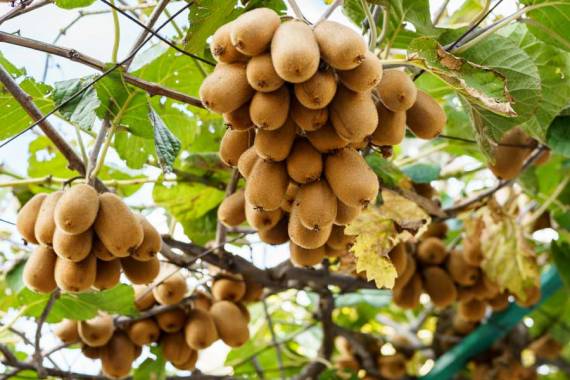ULO / XLO Controlled Atmosphere
ABSOGER has developed systems for ULO and XLO fruit preservation combining extremely low O2 and CO2 preservation rates.

Kiwifruit (Acintada Chineses or Acintada deliciosa) is a native fruit of New Zealand, but it was brought to Europe in 1750. First developed in New Zealand, the fruit was given the name kiwi in 1960.
Global kiwifruit production is about 2,200,000 tonnes per year and the area devoted to its cultivation worldwide is estimated to about 140,000 hectares.
The main exporting countries are those that export around 70% of their production: New Zealand exports 90% of its production, Chile 95%, Italy around 70%, Greece 50% and France around 35-40%.
Kiwifruit are extremely sensitive to ethylene. At harvest, and throughout their life cycle, it is necessary to avoid exposure of the fruit to ethylene.
Fruit harvested at the end of the season retains its firmness better than early season fruit and has a better price at harvest and at maturity.
Maturity indicators
Quality indicators
The controlled atmosphere delays ripening and maintains firmness of the flesh.
CA should be started within 2 days of harvest to maximise benefits; ethylene concentration should be kept below 20ppb to avoid accelerated softening of the flesh and incidence of white heart.
Maintaining fruit firmness (by rapid cooling, cold storage, and the use of CA) can significantly reduce pathogenic damage.
In order to maintain the firmness of the fruit, cold storage by rapid cooling is recommended. Coupled with storage in a controlled atmosphere, these conditions significantly reduce pathogenic deterioration.
Storage conditions
Several pathogens can cause post-harvest damage to kiwifruit. Sunburned fruit is also more susceptible to post-harvest diseases.
Kiwifruit diseases:
Kiwifruit physiological disorders:
